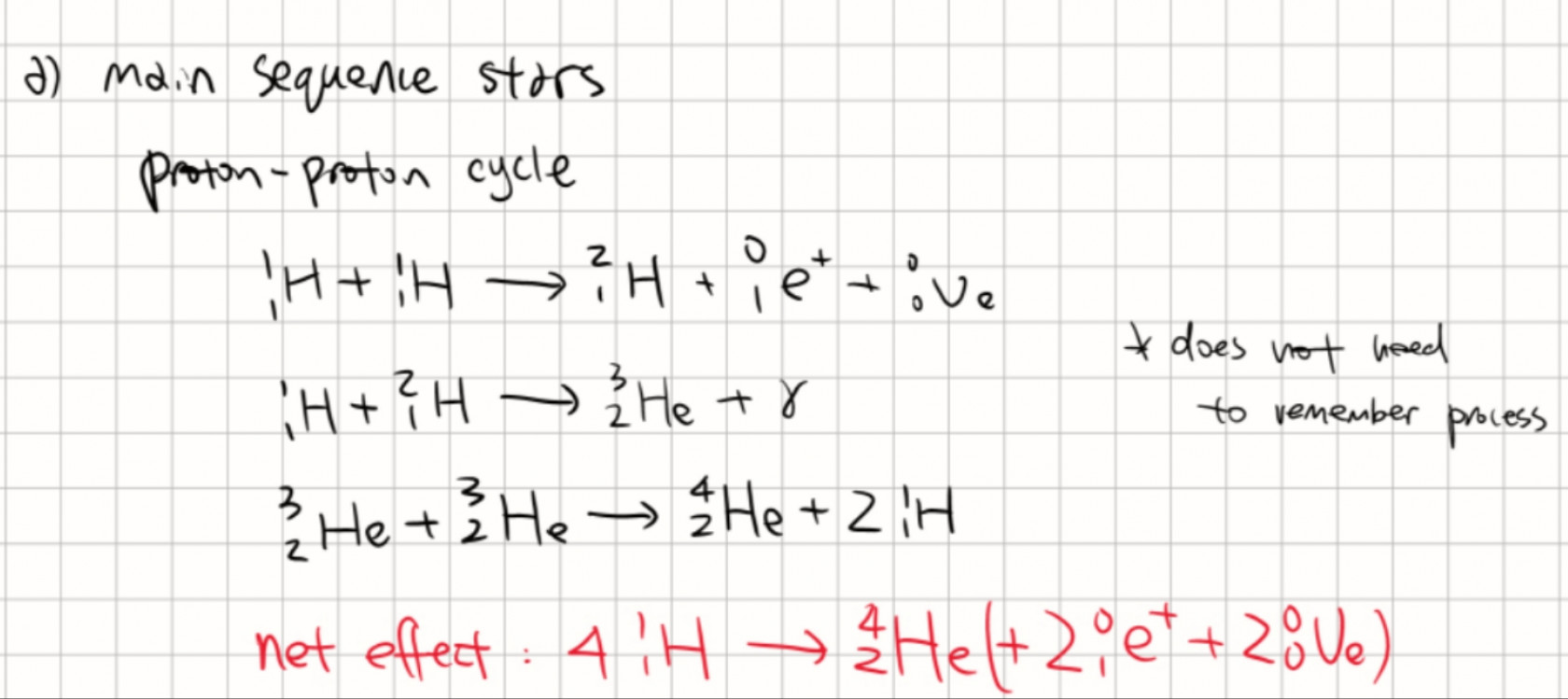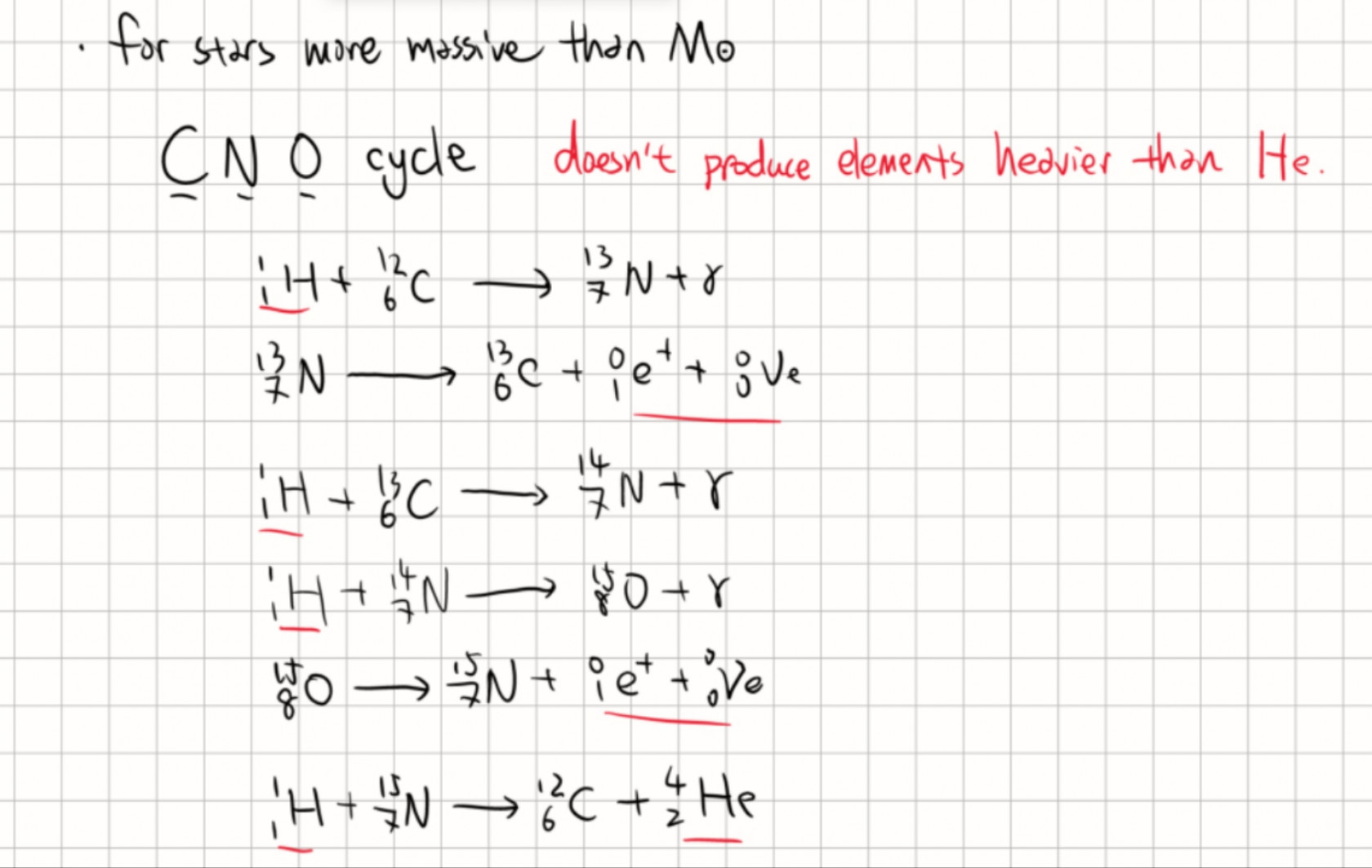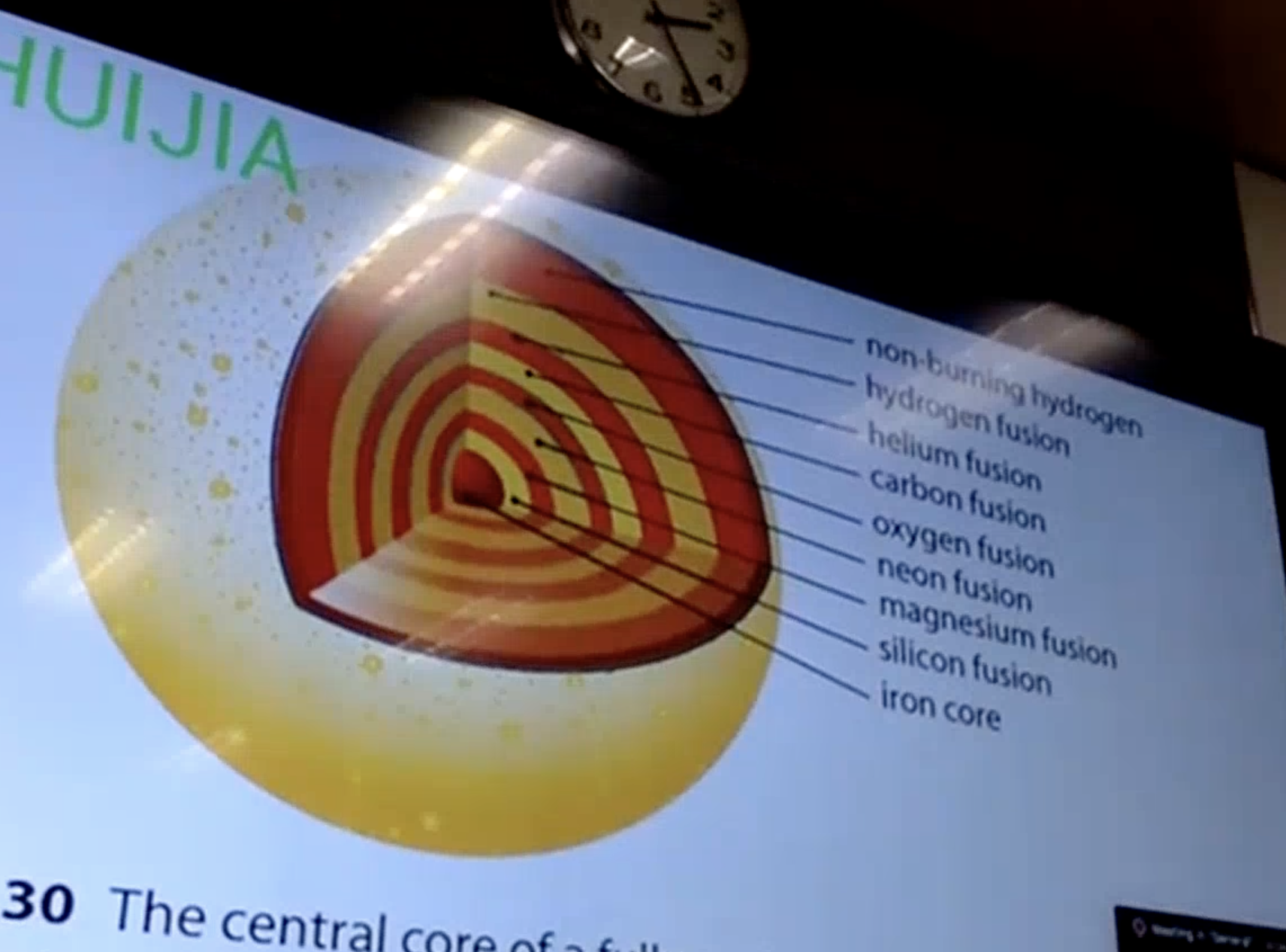D.4 Stellar Processes (HL)
D.4 Stellar processes
| Type 1a Supernovae | Type 2 Supernovae | |
|---|---|---|
| Formation | Core produced when mass from a companion star accretes onto a white dwarf, forcing it to exceed the chandrasekhor limit (1.4M~sun~) [EP吸不住,吸过来的东西立刻进行 |
Produced when a massive red supergiant stars explodes - Core collapse - Implosion is opposed by neutron degeneracy pressure that causes an outward shock wave |
| Do not active hydrogen lines in their spectra (But carbon, oxygen, silicon, iron) | Have hydrogen line | |
| Have a luminosity which falls off sharply after explosion | Luminosity falls off gently after the explosion [有段平台期,有点像晶体结构的热量变化的线] |
Star?Star formation
- Interstellar gas cloud (nebula) from earlier supernova
- gravitational attraction between particles
- Jeans criterion
- The magnitude of the gravitational potential energy of the cloud must be greater than the total random kinetic energy of the particles of the cloud.
- If the mass of cloud is greater than the Jeans' mass M~j~ for a particular redius and temperature, the interstellarr gas collapse/coalesces
- As gas collapse, temperature increases leading to nuclear fusion
- Protostar: when the temperature rises sufficiently for visible light to be emitted
Nuclear fusion
- Main sequence stars:
- For stars more massive than M~sun~
Lifetime of main sequence stars

T与M^-2.5^ 成比例(T是寿命)
$$
\frac{T}{T_\T_{\bigodot}}=(\frac{M}{M_\M_{\bigodot}})^{-2.5}
$$


Layered structure of massive start
- The elements arrage themselves in layers, haviest at the cave, lightest in the envelope.
- Nuclear fusion produce ever heavier elements depending on the mass of the star
Fusion cannot produce elements heavier than iron
- Binding energy per nucleon peaks near iron => one of the most stable elements (Ni-62)
- Formation of heavier elements than iron is not energetically possible.
Neutron capture
这啥?To produce the heavier elements than iron.

| S-process | R-process |
|---|---|
| Slow neutron capture | Rapid neutron capture |
| Small number of neutrons are produced in fusion |
|
| Have enough time to undergo beta decay before further neutron capture | Further neutron are captured before the beta decay |
| Ends with the production of bismuth-209 | Can form nuclides heavier than bismuth-209 |







